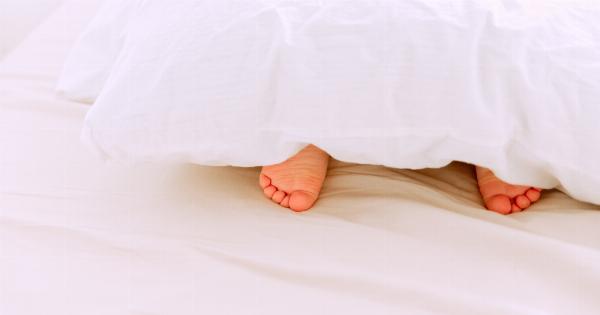Sleep Apnea is a common sleep disorder that occurs when a person’s breathing is interrupted while they sleep. This can range from shallow breathing to complete cessation of breathing, with the latter being the most severe form of the disorder.
It is estimated that around 22 million Americans live with sleep apnea, but many are undiagnosed. It can affect anyone, regardless of age or gender, although it is more common in overweight individuals and those over the age of 40.
Causes of Sleep Apnea
The main cause of sleep apnea is the obstruction of the airway when a person sleeps. There are two types of sleep apnea, obstructive sleep apnea (OSA) and central sleep apnea (CSA).
Obstructive Sleep Apnea
Obstructive sleep apnea is caused by a blockage in the throat, often due to the relaxation of throat muscles that occurs during sleep. This can be triggered by a variety of factors, including:.
- Obesity
- Smoking
- Alcohol Consumption
- Nasal Congestion
- Hormonal changes
- Enlarged Tonsils or Adenoids
Central Sleep Apnea
Central sleep apnea is less common, accounting for around 5-10% of all sleep apnea cases. It is caused by a failure of the brain to signal the breathing muscles while a person sleeps.
This can be due to medical conditions such as heart failure, stroke, or neurological disorders.
Risk Factors for Sleep Apnea
While anyone can develop sleep apnea, there are certain factors that increase the likelihood of developing the disorder. These include:.
- Obesity
- Male Gender
- Older Age
- Family History of Sleep Apnea
- Smoking or Alcohol Consumption
- Nasal Congestion or Allergies
- Medical Conditions such as Hypertension or Diabetes
- Use of Sedatives or Sleeping Pills
It is important to note that not everyone who has these risk factors will develop sleep apnea, and those without any risk factors can also be affected by the disorder.
Diagnosing Sleep Apnea
If you suspect you may have sleep apnea, it is important to speak with a medical professional who can diagnose the disorder. Diagnosis typically involves a sleep study, which can be done in a sleep center or at home.
During the study, your breathing patterns and other vital signs will be monitored, allowing your doctor to determine if you have sleep apnea, and if so, which type and how severe.
Treating Sleep Apnea
Treatment for sleep apnea varies depending on the severity and type of the disorder.
For mild cases of OSA, simple lifestyle changes such as losing weight, quitting smoking, and avoiding alcohol and sedatives before bed can be effective in reducing symptoms. For moderate to severe cases of OSA or cases of CSA, continuous positive airway pressure (CPAP) therapy is often recommended.
CPAP therapy involves the use of a machine that delivers air pressure via a mask worn over the nose and/or mouth during sleep. This helps keep the airway open, allowing for proper breathing throughout the night.
Conclusion
Sleep apnea is a disorder that affects millions of people worldwide. While it can be caused by a variety of factors and affect anyone, certain risk factors increase the likelihood of developing the disorder.
If you suspect you may have sleep apnea, it is important to seek medical attention and discuss treatment options with a healthcare professional.






























